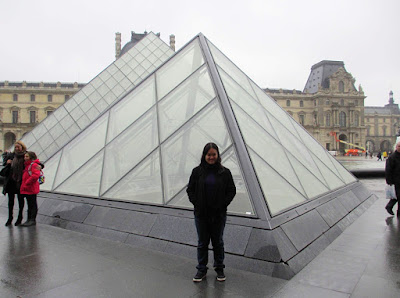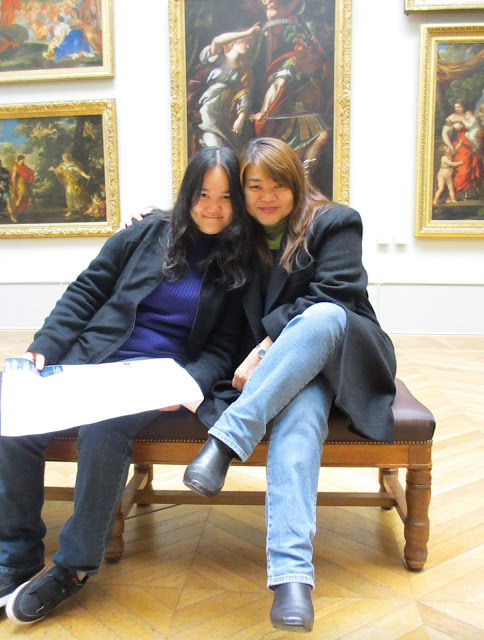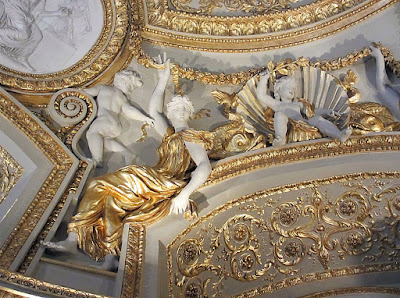The Louvre was originally a fortress built in 1190 and reconstructed in the 16th century to serve as a royal palace for French kings. Its history began when Philippe Auguste wanted to erect a fortified closure to protect Paris before he went to war.
By 1500s, King Francois I declared The Louvre as his official royal residence. He stored his collection of artwork there and all successive French monarchs added their collection to the palace.
It became an art museum in 1793 when King Louis XVI moved his residence to Versailles. The art museum was a product of the French Revolution and became a symbol of Enlightenment ideals that informed the revolution via public display of art from the royal collection.
The iconic Louvre pyramid was added in the 1980s.
The Louvre houses Western art from ancient civilizations to the 19th Century. The grand palace that houses the museum which dates back to the 12th century has amazing architecture.
The Louvre has 35,000 priceless masterpieces and antiques for the public viewing.
In the Da Vinci Code, Brown alleges that the remains of Mary Magdalene are located right under the inverted pyramid, underneath this ground!
Louvre Copyists
The Louvre opened its doors to copyists in 1793 and they have 3 months to complete a copy of a masterpiece. Then, their work will be closely inspected, stamped and signed by the head of The Louvre's copy office. The Louvre issues 250 permits annually for artists of all backgrounds to be a copyist in their museum.


The Death of Cleopatra by Giovanni Pedrini Giampietrino (1538).
Cleopatra VII was the last ruler of Ptolemaic Egypt and committed suicide by allowing an Egyptian cobra to bite her.
Venus and Cupid by Lambert Sustris (1560)
The Wedding at Cana, by Italian artist Paolo Veronese (1563) depicting a biblical story of the marriage at Cana where Jesus converted water to wine.
Loved to watch school children coming to The Louvre for their art lesson.
Venus of Arles in Hymettus Marble, dates to the end of the 1st Century BC. It was discovered in several pieces in the Roman Theatre in Arles. It is the Goddess Aphrodite (Roman Venus) standing partially disrobed with an apple in her hand.
The Adoration of the Shepherds with Saint Longinus and Saint John the evangelist, by Giulio Romano (1535)
Aphrodite
Athena Velletri or Pallas of Velletri was found in Velletri in the 18th Century.
Hercules and son Telephus, 1st-2nd Century CE, discovered in Tivoli (east of Rome). Artist unknown. In Greek mythology, Telephus was the son of Hercules and Auge.
Aphrodite, Roman Venus, Vienne Goddess of Love. Also known as The Crouching Venus. This is 1st to 2nd Century Roman marble. Statue was excavated from the Palace of Mirrors in Saint Romain en Gal. This is a Hellenistic model of Venus surprised at her bath.
The Galerie d'Apollon or The Apollo Galery, the most dazzling hall in The Louvre. From its walls to its ceiling this gallery shimmers in paintings, tapestries, jewels, gilded embellishments and statues. This was the first royal gallery of King Louis XIV.

The Apartments of Napoleon III, a glimpse of Napoleon's grandiose lifestyle during the end of the 19th Century. The original furniture and wall decorations were preserved.

The Great Sphinx of Tanis. It was found in 1825 among the ruins of the Temple of Amun in Tanis, which was the capital of Egypt during the 21st and 22nd dynasties. Head of a King and a body of a lion.
Psyche Revived by Cupid's kiss, sculpture by Antonio Canova (1787).
The winged young man is the god Eros (Cupid). The girl's name is Psyche.
Psyche was demanded by Eros' mother, Venus, to bring back a flask from the underworld but she was forbidden to open it. Psyche disobeyed and breathed in terrible fumes that she fell into a deep sleep. Eros lifted her in a tender embrace.
The Virgin and Child with Saint Anne by Leornado da Vinci (1503), depicting Saint Anne, her daughter the Virgin Mary and the infant Jesus, grappling with a lamb.



The Grande Odalisque, by Jean Auguste Dominique Ingres (1814) depicting a concubine. The word Odalisque stems from a Turkish term for harem concubine. This is a Neoclassical art.



The Grande Odalisque, by Jean Auguste Dominique Ingres (1814) depicting a concubine. The word Odalisque stems from a Turkish term for harem concubine. This is a Neoclassical art.
Winged Victory of Samothrace
Also called the Nike of Samothrace, is a 2nd Century BC marble sculpture of the Greek Goddess Nike (Victory). It is a winged female figure on a base in the shape of the prow of a ship. The figure's head has never been found!
The Intervention of the Sabine Women by French painter Jacques-Louis David (1799).
This is a legendary episode following the abduction of of the Sabine women by the founding generation of Rome. The Sabines attempted to get the women back from the Romans and the women are intervening to stop bloodshed.
This is a legendary episode following the abduction of of the Sabine women by the founding generation of Rome. The Sabines attempted to get the women back from the Romans and the women are intervening to stop bloodshed.
The Battle of David and Goliath by Daniele da Volterra (1509-1599), a Tuscan artist. This amazing painting was sitting right in the center of the art gallery. It is so uniquely placed because it is TWO-SIDED! Yessss! It is a picture painted on both sides, representing the same composition from 2 different angles.
(The 2 photos below are from GOOGLE to show you how the two-sided painting
looks like in The Louvre's art gallery)



(The 2 photos below are from GOOGLE to show you how the two-sided painting
looks like in The Louvre's art gallery)



Centaur & Cupid or Old Centaur ridden by Eros, 2nd Century Greek Marble (grey-black marble), found in Rome in the 17th Century.
Leonardo da Vinci's Mona Lisa is one of the most famous pieces of art in The Louvre.
I did not expect the painting to be so small. It's size is only a little larger than an A2 piece of paper.

























































































No comments:
Post a Comment